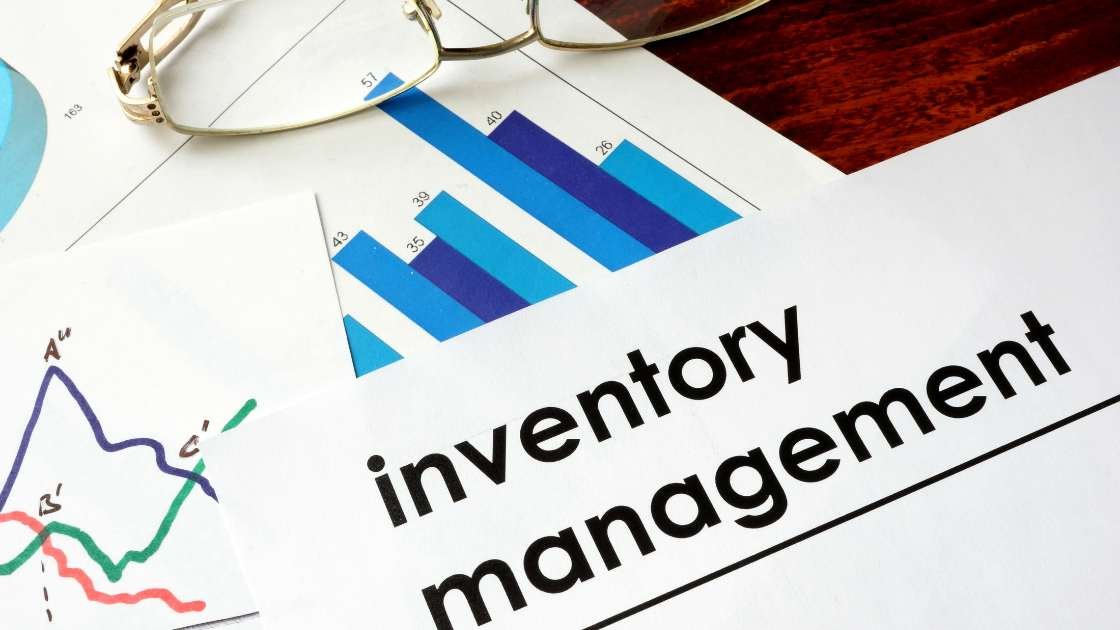Opening a convenience store in the U.S. can cost between $50,000 and $1 million+. Factors like location, size, inventory, and franchise fees greatly affect the final cost.
Opening a convenience store presents an appealing entrepreneurial opportunity, offering a flexible investment range. The initial expenses encompass securing an ideal location, involving considerations such as purchasing real estate or leasing a commercial space.
The size of the store plays a pivotal role, influencing factors like shelf space, inventory variety, and, most importantly, shaping the overall shopping experience for customers. To delve deeper into the specifics of starting this venture, one might inquire, “How Much Does It Cost to Open a Convenience Store?”

An entrepreneur must decide whether to buy into a franchise, with its built-in brand recognition and support or to launch an independent store, which may offer more freedom but require more effort in marketing. Establishing a solid customer base hinges on a convenient location, along with competitive pricing and well-selected merchandise.
Pre-opening expenses also entail licenses, permits, insurance, and equipment purchases. Your budget must account for these variables to accurately gauge the onset investment for a convenience store.
Initial Investments: Breaking Down The Basics

Commenceing on the journey to open a convenience store can be exciting. The costs involved is vital. The seed that sprouts into a bustling convenience store is initial investment. From selecting a location to stocking up on equipment, each decision impacts the budget. Let’s dissect the financial soil required to cultivate your store’s success.
Location Costs: Renting Vs. Buying
Renting or buying a space for your store is a pivotal choice. This decision forms the foundation of your initial costs. Here is what to consider:
- Rent: Less upfront cost, flexibility, but potential for rent increases.
- Buy: Higher initial expense, but no rent hikes, and asset appreciation potential.
Location expenses vary widely, based on city, neighborhood, and square footage.
| Rental Cost | Purchase Cost |
|---|---|
| $1,500 – $8,000/month | $200,000 – $1,000,000+ |
Store Setup: Shelves And Equipment

Store setup is more than meets the eye. Shelving and equipment are the gears of your convenience machine. Here are the essentials:
- Shelves
- Refrigeration units
- Point of sale system
- Security equipment
Creating a functional layout requires a smart investment.
- Choose durable shelves to display merchandise.
- Invest in efficient refrigeration for perishable goods.
- Secure an advanced POS system for smooth transactions.
- Don’t skimp on security cameras and alarms.
Costs for setup span from $10,000 to $50,000, depending on quality and scale.
Stocking Up: Inventory Expenses

Commencing on the journey of opening a convenience store can be exhilarating. One of the most important tasks is stocking up your shelves. Inventory expenses can vary widely, but they are essential for kickstarting your store’s success. Careful planning for these costs will set the foundation for a well-stocked and profitable business.
Product Selection: Essentials To Offer
Selecting the right products is key to customer satisfaction. Start with essentials that everyone needs. These typically include:
- Snacks: Chips, candy, and nuts
- Beverages: Soda, water, and juice
- Dairy: Milk, cheese, and eggs
- Frozen goods: Ice cream and meals
- Personal care: Toilet paper and soap
- Household items: Cleaners and lightbulbs
Remember to tailor inventory based on local preferences and seasons.
Inventory Management: Systems And Software

Efficient inventory management keeps your store running smoothly. Up-to-date systems and software can make a big difference. These tools help you track sales, monitor stock levels, and order new products with ease.
Consider the following:
| Software Type | Function | Cost Range |
|---|---|---|
| POS System | Process sales and manage inventory | $500 – $2,000 |
| Inventory Management Software | Track and reorder stock | $100 – $500/month |
Compare options and choose a system that aligns with your budget and needs.
Monthly licenses or subscriptions will affect your ongoing expenses, so include them in your budget forecasts.
Licensing And Legal Fees
Licensing and Legal Fees are vital when opening a convenience store. These costs often vary by location and business size. Before any goods hit the shelves, future shop owners must navigate the maze of legal requirements and protect their investment with the right coverage.
Business Registration And Permits
Starting a convenience store begins with business registration. This official step gives your store its legal identity. Depending on local laws, this might include registering as a:
- Sole Proprietorship
- Partnership
- Limited Liability Company (LLC)
- Corporation
After registration, obtaining permits is next. Let’s break down some common ones:
| Type of Permit | Description | Cost Estimate |
|---|---|---|
| Seller’s Permit | Allows the sale of goods. | $0 – $50 |
| Health Department Permit | Required if selling food. | $100 – $1,000 |
| Fire Department Permit | Needed for public safety. | $50 – $500 |
Tip: Always check with local authorities for accurate costs.
Insurance: Protecting Your Investment
Insurance is not a corner to cut. It shields your business from unexpected disasters. Here’s a snapshot of common policies:
- General Liability Insurance: Covers accidents in the store.
- Property Insurance: Protects store assets.
- Workers’ Compensation: Mandatory if you have employees.
Expect to pay anywhere from $500 to $2,500+ annually for a basic policy. Costs vary depending on:
- Store size
- Location
- Risks involved
Research and compare quotes to find the best fit for your store. Remember to consult a licensed insurance agent for expert advice.
Ongoing Operational Costs
Ongoing operational costs are crucial in running a convenience store. This budget keeps your store alive after the grand opening. Let’s Plunge into two major aspects, utilities and maintenance, and employee costs.
Utilities And Maintenance

Monthly bills keep the lights on and shelves stocked. A breakdown of utility costs includes electricity, water, and internet services.
- Electricity: Vital for lighting and refrigeration.
- Water: Necessary for cleanliness and restrooms.
- Internet: Runs point of sale systems.
Maintenance ensures everything runs smoothly. Consider cleaning services, equipment repairs, and restocking fees.
| Service | Monthly Cost |
|---|---|
| Cleaning | $300 |
| Equipment Repair | $200 |
| Restocking | Varies |
Employee Salaries And Training
Staffing costs can be your largest expense. Salaries depend on roles and hours worked.
- Managerial positions may cost more due to added responsibilities.
- Cashiers are critical for day-to-day store operations.
- Stock personnel keep items accessible to customers.
Training new employees is a must. It ensures efficient, professional service. Costs vary with the training method and materials.
| Position | Salary Range |
|---|---|
| Manager | $47,000 – $60,000 |
| Cashier | $31,000 – $36,000 |
| Stock Person | $33,000 – $42,000 |
Marketing And Advertising
Starting a convenience store brings many costs, and a key area is Marketing and Advertising. Effective promotion can attract customers and increase sales.
Let’s Plunge into the costs related to marketing a new convenience store.
Grand Opening Campaign
Kicking off with a strong Grand Opening is vital. Costs here include:
- Banners and signs
- Flyers and local ads
- Social media promotion
A budget might range from $2,000 to $10,000 depending on the scale.
Building Customer Loyalty: Strategies And Programs
Customer loyalty programs keep shoppers coming back. Options include:
| Program | Cost Estimate |
|---|---|
| Point systems | $500 – $5,000 (setup) |
| Discount clubs | $100 – $1,000 (annual) |
| Membership cards | $0.10 – $1 (per card) |
Don’t forget the cost for software to track these programs!
Long-term Financial Planning

Starting a convenience store is more than just a day-one affair. It requires foresight and careful financial planning that sets you up for long-term success. Let’s Plunge into budgeting and projections, and when you can expect your investments to start paying off.
Setting Up For Success: Budgeting And Projections
Effective budgeting is the backbone of any successful convenience store. You need a clear financial map that includes both your immediate costs and ongoing expenses. Start by determining your startup costs:
- Lease or purchase of property
- Licenses and permits
- Store setup and design
- Initial inventory stock
- Marketing and grand opening expenses
Don’t forget the operational costs:
- Utilities and maintenance
- Employee salaries
- Continuous inventory replenishment
- Insurance
Project your revenue growth versus these costs. Use realistic assumptions based on market research. Excel provides a great tool for creating detailed financial projections.
When To Expect A Return On Investment
Your timeline for profit depends on multiple factors:
| Factor | Impact on ROI |
|---|---|
| Location | High-traffic areas often yield quicker returns. |
| Inventory Management | Efficient stock use contributes to better returns. |
| Customer Service | Quality service leads to repeat business. |
Analyze your monthly financials. Review sales trends and adjust operations as needed. Generally, convenience stores can begin seeing a return on investment within one to three years. Patience and continuous improvement are key. Stay knowledgeable about the convenience store industry to adapt quickly and make informed decisions.
Frequently Asked Questions On How Much Does It Cost To Open A Convenience Store
Is Owning A Convenience Store Profitable?
Owning a convenience store can be profitable. Success depends on location, management efficiency, and local market conditions. Proper operation can yield solid financial returns.
How Much Does It Cost To Start A Convenience Store In Us?
Starting a convenience store in the U.S. typically ranges from about $50,000 to $250,000 for small, independent stores. Franchised or larger formats can require $250,000 to $1.6 million+, depending on brand, location, and build-out.
How Much Does A Convenience Store Owner Make A Year?
A convenience store owner’s annual income varies widely, typically ranging from $30,000 to $150,000, influenced by location, store size, and sales volume.
What Makes The Most Money In A Convenience Store?
Tobacco and beverages often drive a large share of in-store sales. However, the highest gross margins typically come from foodservice (prepared foods and dispensed beverages) and packaged beverages. Lottery tickets usually carry low retailer commissions (around six cents per $1 of sales) but can increase foot traffic.
How much does it cost to start a convenience store in us?
Embarking on the journey to open a convenience store in the U.S. prompts the question: how much does it cost? The answer hinges on factors like franchise choices, with fees ranging from $10,000 to $100,000+, and location influencing lease expenses. Equip your store wisely, considering shelving, refrigeration, and point-of-sale systems, and be mindful of additional costs like licenses and initial inventory. Conducting thorough market research is key to navigating these financial considerations successfully.
Conclusion
Opening a convenience store is an investment with variables. Costs hang on location, inventory, and size of your venture. Start with thorough planning and a clear budget. It’s a significant step towards a successful retail business. Dream big, spend wisely, and aim for success in your entrepreneurial journey.


